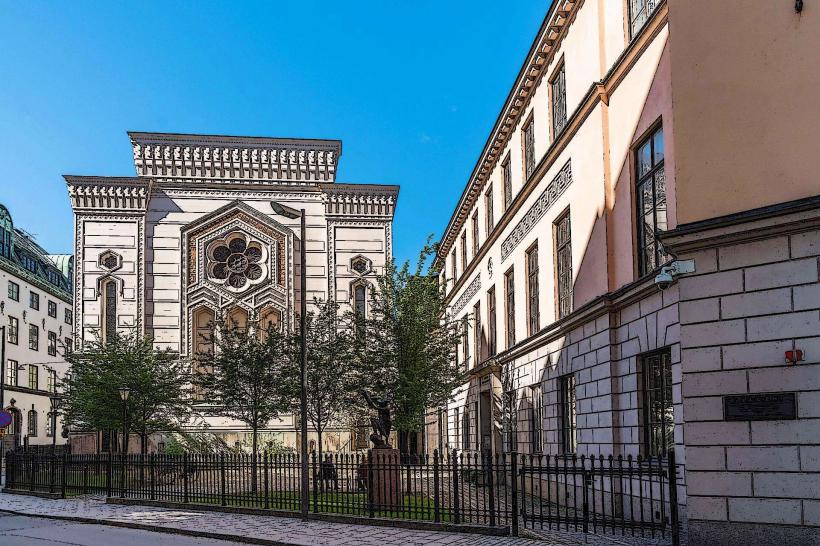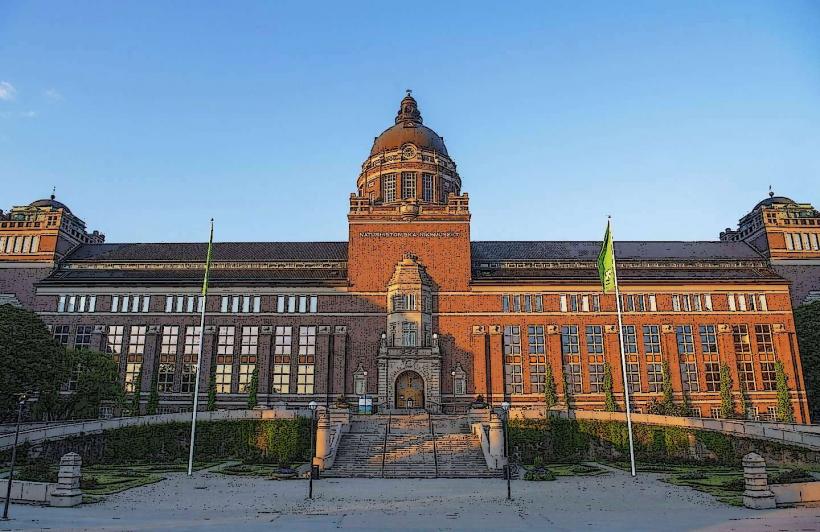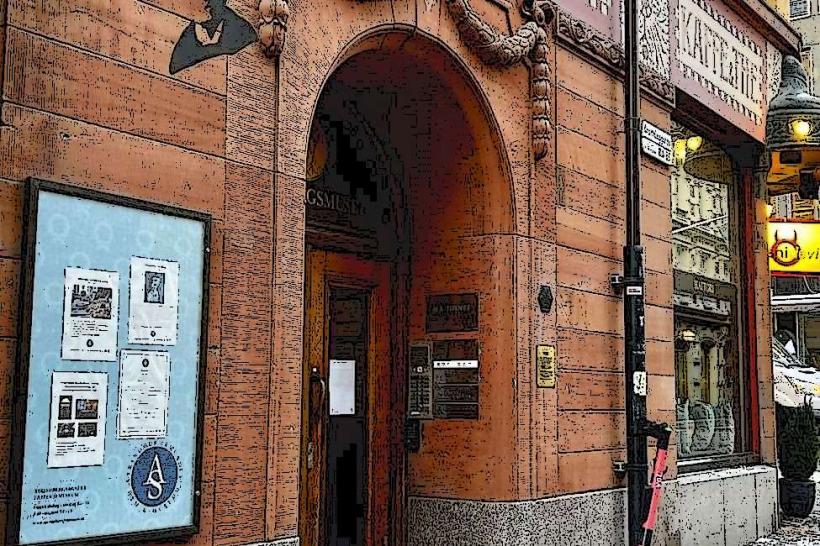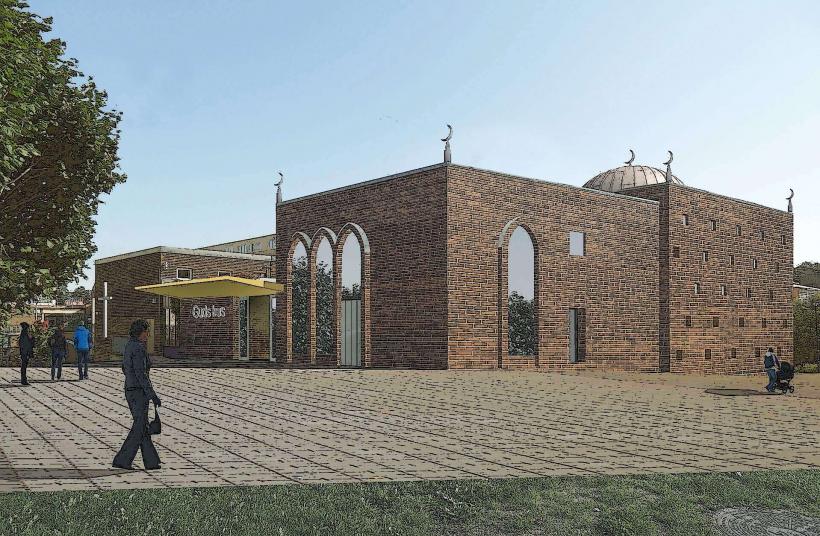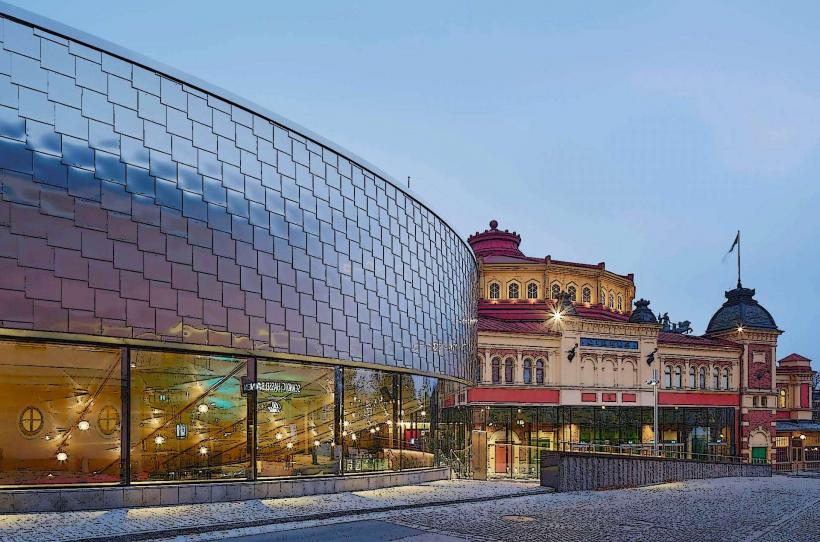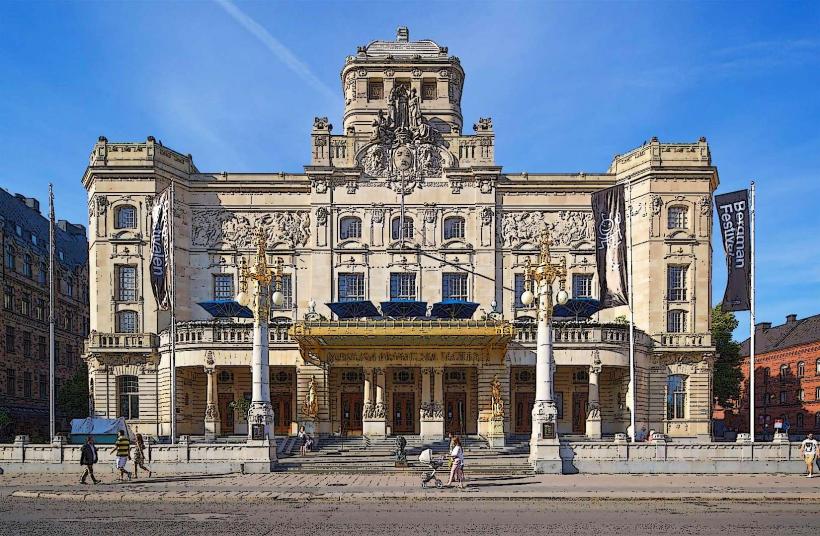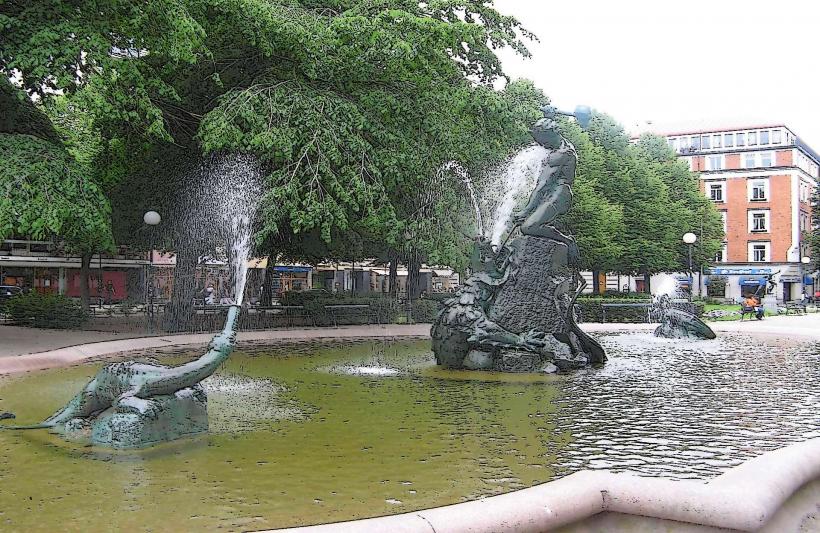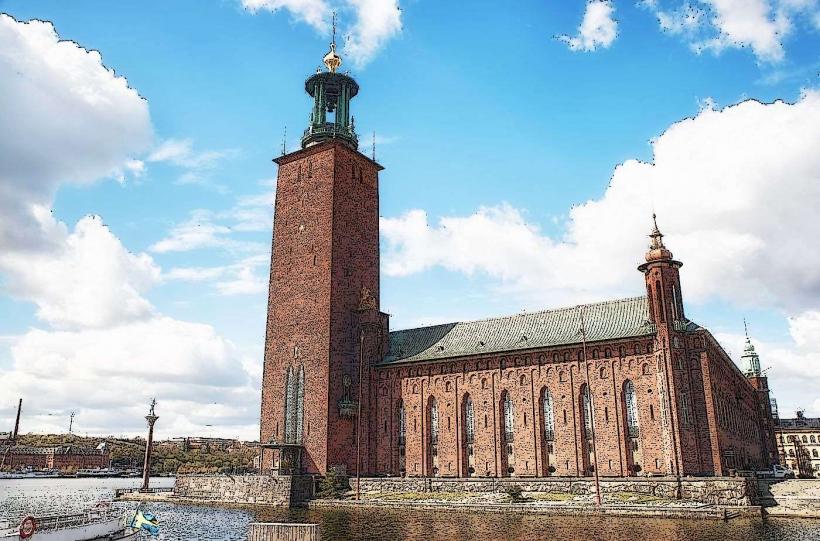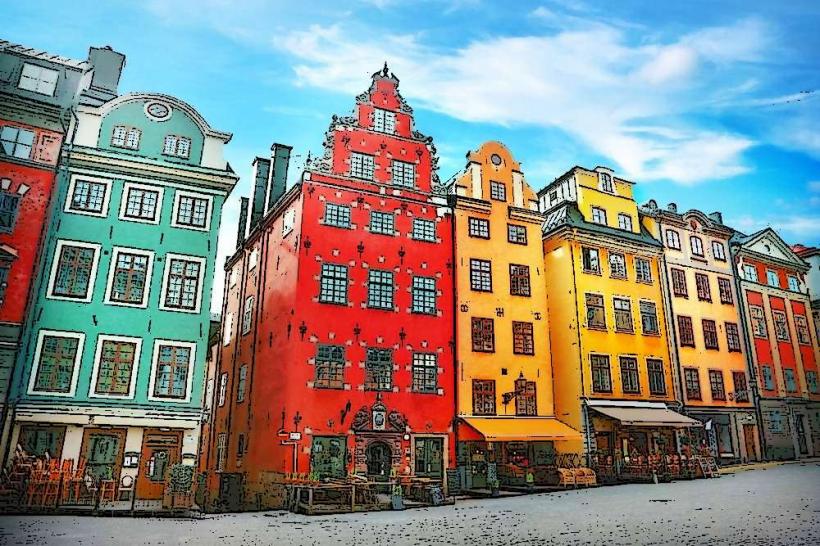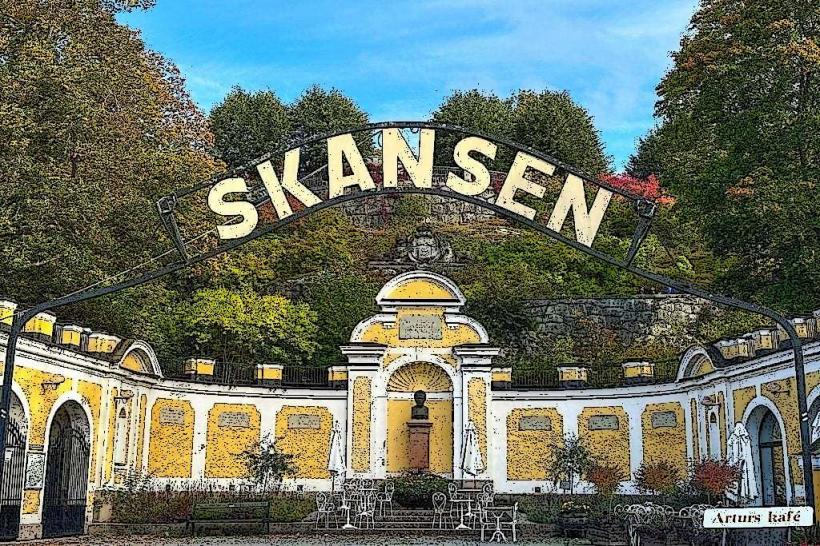Information
Landmark: Swedish National LibraryCity: Stockholm
Country: Sweden
Continent: Europe
The Swedish National Library (Kungliga Biblioteket, or KB) is the largest library in Sweden and one of the most important cultural institutions in the country. Located in Stockholm, the library is a hub for research, learning, and preservation of Sweden's literary heritage. Here's a detailed overview of the Swedish National Library:
1. History and Significance
Establishment: The Swedish National Library was officially founded in 1661 by King Charles XI, though its roots trace back earlier to the collection of royal books. It was originally intended to serve as the royal library, but over time it expanded to become a national institution with a broader mission. The library was first located in the Royal Palace before moving to its present location.
Mission: The primary mission of the National Library is to preserve and make accessible Sweden's cultural and intellectual heritage. It collects all publications printed in Sweden, including books, newspapers, and electronic materials, making it an essential resource for research and education.
Legal Deposit: One of the key aspects of the Swedish National Library’s role is its legal deposit system, which mandates that a copy of every book, article, or publication printed in Sweden be submitted to the library. This ensures that the library holds a comprehensive collection of Swedish literature and research.
2. Architecture and Design
Main Building: The library’s main building, located at Humlegården in Stockholm, was designed by the architect Gunnar Asplund and opened in 1928. The building is a significant example of neoclassical architecture, with elements of modernism. Its circular reading room, known as the Rotunda, is particularly famous for its grand, domed ceiling and elegant, minimalist design.
Rotunda: The Rotunda is the heart of the library. It is a large, circular reading room with a domed ceiling, which is a hallmark of the building’s design. The room has oak shelves that hold a vast collection of books, creating an impressive and serene space for reading and study. The layout and design of the Rotunda make it a celebrated architectural feature of the library.
Expansion: In recent years, the library has expanded its facilities to accommodate modern needs and technologies. This includes the entrance hall, the special collections areas, and digital archive spaces. The library continues to evolve to meet the demands of digital research and storage.
3. Collections and Resources
National Collection: The Swedish National Library holds a comprehensive collection of Swedish publications, including books, periodicals, maps, manuscripts, and newspapers. It is an invaluable resource for researchers, students, and anyone interested in Swedish history, culture, and language. The library’s collection also includes rare and antique works that are preserved in its special collections.
Digital Collections: In addition to physical books, the library also collects digital materials, such as e-books, websites, and other online resources. The library has made significant efforts to digitize Swedish cultural heritage to ensure its preservation and accessibility for future generations.
International Collections: While the primary focus is on Swedish publications, the library also holds a collection of international works, particularly those that relate to Sweden’s history, culture, and foreign relations. The library serves as a global resource for the study of Swedish literature and its impact on the world.
Special Collections: The library's special collections include rare books, manuscripts, and maps. Notable collections include works related to Swedish literature, early printed books, and historical documents. The music collection is also particularly noteworthy, containing musical scores, sheet music, and recordings.
4. Research and Services
Research Support: The library is a major research resource, supporting both scholarly and practical research in various fields. It provides access to an extensive range of academic journals, databases, and digital archives. Researchers can use the library’s resources for studies in history, literature, science, and more.
Public Access: While the library primarily serves researchers and academics, it is open to the public. Visitors can access books, study materials, and digital archives, and the library offers various programs, events, and exhibitions that are open to the general public. The library also provides access to international journals and digital resources not widely available elsewhere.
Library Services: In addition to offering physical books and digital materials, the Swedish National Library provides various services, including research consultations, workshops, and reading rooms. The library staff are available to assist with research, whether it’s for academic purposes or personal interest.
5. Cultural and Educational Programs
Exhibitions: The library frequently hosts exhibitions that highlight specific aspects of Swedish history, culture, and literature. These exhibitions are often themed around specific authors, historical events, or literary movements and offer a deeper understanding of Sweden's cultural heritage.
Events and Lectures: The library organizes a variety of lectures, seminars, and panel discussions on topics ranging from literature and history to digital archives and contemporary research. These events are often open to the public and feature scholars, authors, and experts in various fields.
Publications: The library regularly publishes research papers, catalogs, and digitized archives that contribute to Swedish cultural studies and academia. Many of these publications are available online for free, helping to disseminate knowledge and research to a wider audience.
6. Role in Swedish Society
Cultural Heritage Preservation: As the national repository for all printed materials in Sweden, the library plays a crucial role in preserving the nation’s cultural and intellectual history. Its extensive collections ensure that Swedish cultural expressions, scientific knowledge, and literature are documented and available for future generations.
Educational Resource: The library serves as a key resource for students, educators, and researchers throughout Sweden. It supports learning at all levels, from primary education to advanced university research. Its resources are used in many fields, including history, literature, science, and social sciences.
International Collaboration: The Swedish National Library collaborates with other national libraries around the world to promote international scholarly exchange. It also plays a role in the international library community, participating in global initiatives for the preservation and accessibility of cultural heritage.
7. Visitor Experience
Public Access: The Swedish National Library is open to the public, though some areas require special access or membership. Visitors can explore the library’s main reading rooms, access digital archives, and enjoy its exhibitions and events.
Tours: Guided tours of the library are available, providing insight into the building's architecture, history, and collections. These tours are a great way to learn more about the library’s role in Swedish society and its vast resources.
Café and Facilities: The library has a café where visitors can relax and enjoy refreshments. There are also study areas, workstations, and Wi-Fi available for those who wish to study or work in a quiet, academic environment.
8. Conclusion
The Swedish National Library is an indispensable institution in Sweden, preserving the nation’s literary and cultural heritage while serving as a vital resource for scholars, students, and the general public. Its vast collections, cutting-edge facilities, and commitment to research and preservation make it one of Sweden’s most significant cultural landmarks. Whether you are a researcher, a book lover, or simply someone interested in Swedish culture, the National Library offers an unparalleled experience in the heart of Stockholm.






